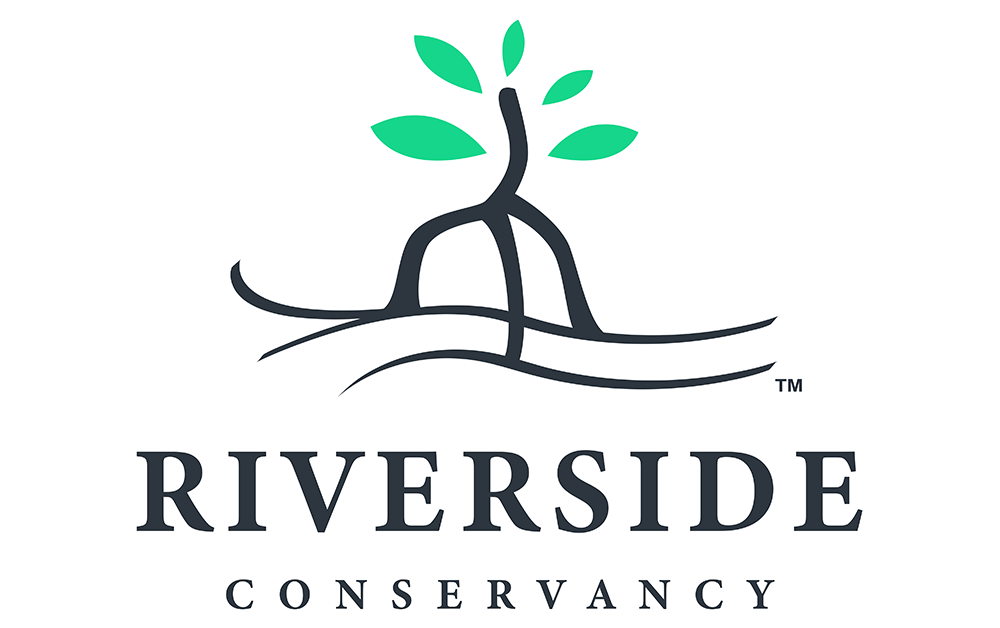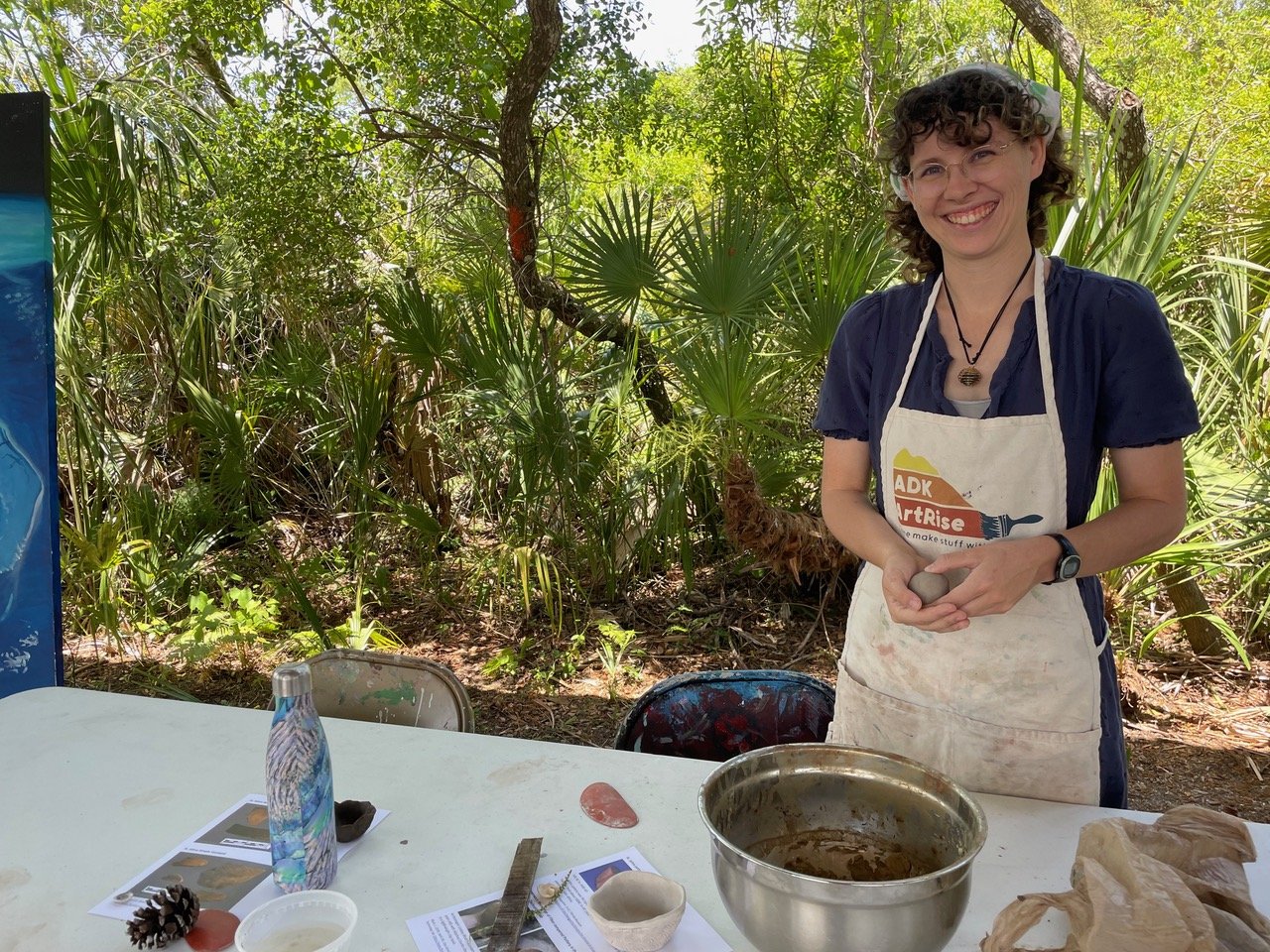Artist Johnny Dame painting a picture of Florida at the ACA Event. Photo courtesy of Eve Payor.
By Lisa D. Mickey
Doris “Doc” Leeper was determined to mesh arts and the environment in Volusia County years ago when she established Atlantic Center for the Arts (ACA) and helped push for Canaveral National Seashore to become a part of the National Park System.
That spirit of Leeper was on full display in late April when ACA hosted the inaugural “Speaking With the Land” event, bringing together artists, educators, nature lovers, policy makers, environmental scientists and the public for an afternoon of collaboration on the 69-acre campus nestled within a forest in New Smyrna Beach.
“You can’t be connected with nature if you never go outdoors,” said Dr. Cindy Bennington, a professor of biology at Stetson University, when asked what would be her “call to action” in this area’s coastal community.
“Increase the cross-pollination between and support for different groups and be involved in all of them to protect the environment,” added Riverside Conservancy Executive Director Kelli McGee.
The Saturday event began with an “awareness exercise to open the senses” in ACA’s amphitheater followed with displays by nature-influenced artist Johnny Dame and local ceramicist Casey Ramey. Southeast Volusia Audubon also displayed avian information at a table and later led a bird walk on ACA’s campus.
Panel discussion on the ACA campus. Photo courtesy of Eve Payor.
A panel discussion, including McGee, Bennington, Ramey, Dame, Volusia County teacher Louise Chapman, ACA apiarist and Board of Trustee member Doug McGinnis, and facilitated by Stetson University professor Dr. Jason Evans, discussed local environmental issues and challenges. A public audience had the opportunity to engage with the panelists.
“Doc Leeper’s conservation legacy in Volusia County is quite profound and we thought it was important to bring that legacy front and center in this event,” said Evans, who serves as executive director of Stetson’s Institute for Water and Environmental Resilience (IWER). “I really enjoyed the opportunity to be a part of an interdisciplinary collaboration with ACA.”
Evans and McGinnis, along with a number of other local environmental leaders and guests, explored ACA’s undeveloped 30 acres that included an active bald eagle’s nest and managed bee hives. The group also walked to an area in which a mangrove forest extended from the nearby Spruce Creek salt marsh to the center’s undeveloped property line.
“Our relationship to nature can be better understood using science, but best communicated using the arts,” said Eve Payor, ACA’s Community Arts Director. “Cross collaboration in arts and science is vital to connect a full spectrum of perspectives, which can reveal innovations in how humans relate to nature.”
The idea to hold the event sprung from an April 2023 Earth Day celebration at the Stetson Aquatic Center that included an unveiling of an eco-historical mural developed by Dame. The artist, along with Payor of ACA, Evans and other Stetson educators, discussed introducing a public event at ACA that would continue supporting Leeper’s vision.
When the planned event set for December 2023 was canceled due to inclement weather, organizers pushed the inaugural community program back to April 2024. Moving forward, ACA hopes to hold on-site quarterly events that will incorporate ACA visiting artists-in-residence.
“Doc Leeper was an ambitious advocate for the land and how that inspires the arts,” said Ramey, a 2023 Stetson University environmental studies graduate who now works as a program coordinator for Stetson’s IWER. ”This event is just that, and I think we succeeded in upholding her legacy by exploring multiple connections across disciplines and across space and time.”
Ceramicist Casey Ramey sculpting at the event. Photo courtesy of Eve Payor
Ramey said she has been inspired by the work of generations before her, and the recent event also provided her with an opportunity to share ceramic art and nature with a younger generation attending the new program.
“We would not have art without the environment and we could not work to save the environment without artistic representation,” Ramey added. “Art is the visceral way we share about our environment.”
ACA plans to host its next free, public event on May 25, featuring guest speaker Bryon White of Yaupon Brothers Tea. White will discuss the locally grown yaupon holly tree’s importance in sustainable agriculture, as well as its historic use by indigenous people and by modern tea drinkers.
The goal of the event organizers is to keep a steady focus on both the environment, as well as the art that stems from surrounding nature.
“As our local ecosystems continue to be under threat from a whole variety of factors – including rapid development, climate change, invasive species and lack of resource management – the arts play a really important role to remind us what’s beautiful and special about these places,” said Evans.
“In other words,” he added, “the arts help give us a framework for understanding what we are trying to protect, conserve and restore.”



